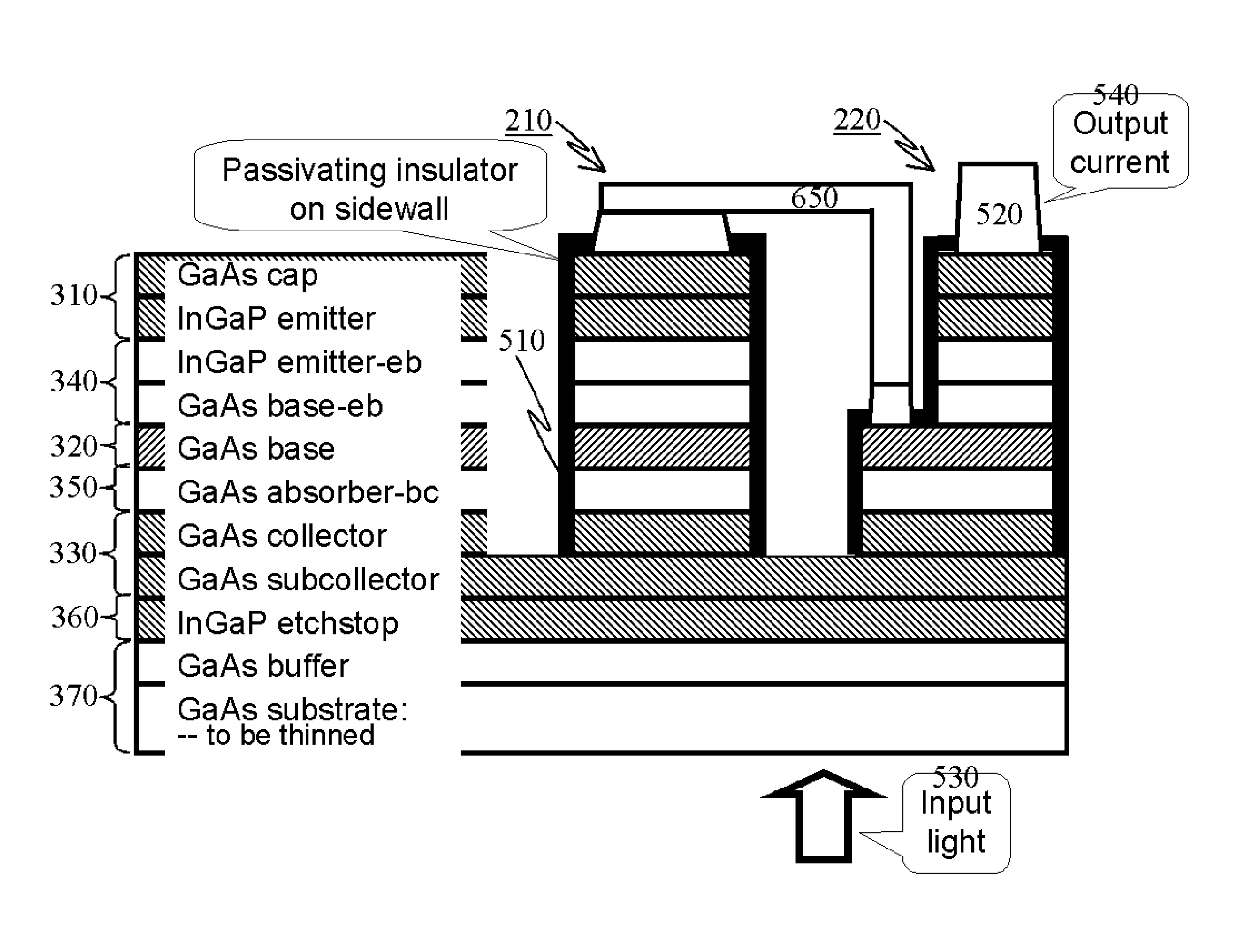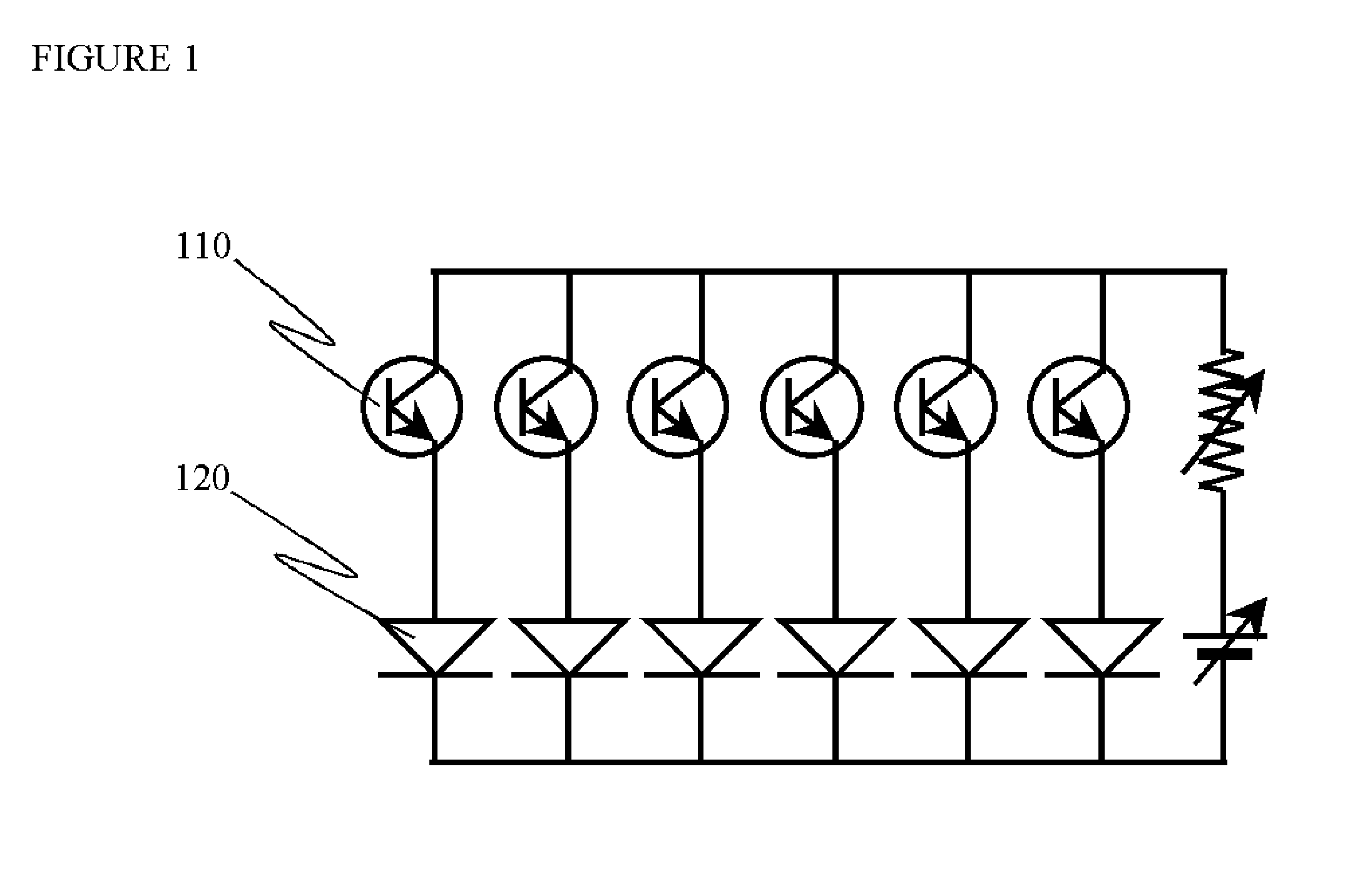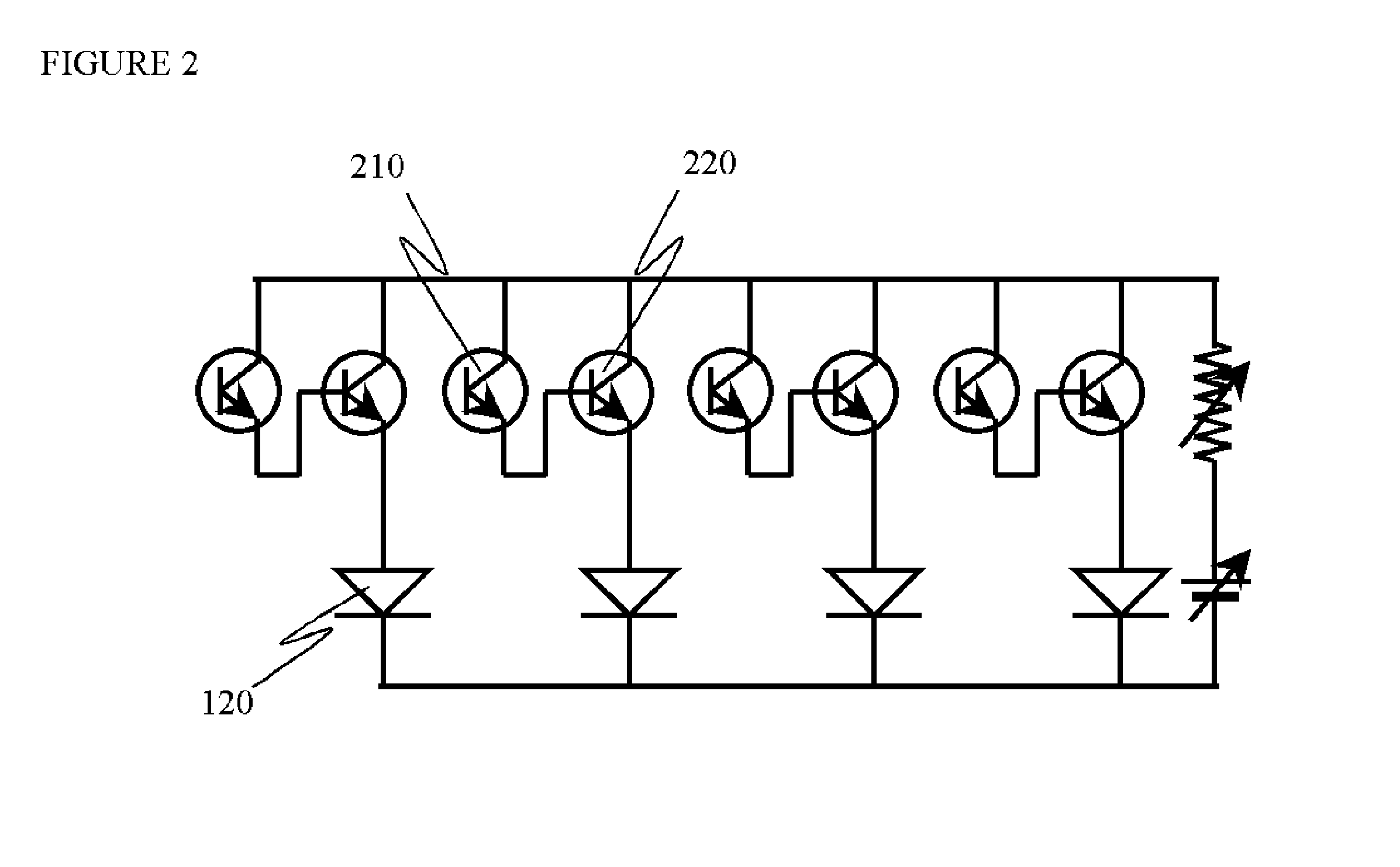Image intensifier using high-sensitivity high-resolution photodetector array
a photodetector array and high-sensitivity technology, applied in the field of phototransistor-based photodetector arrays, can solve the problems of limited view angle, short operating life, high manufacturing cost,
- Summary
- Abstract
- Description
- Claims
- Application Information
AI Technical Summary
Benefits of technology
Problems solved by technology
Method used
Image
Examples
Embodiment Construction
[0058]In the preferred embodiment of this invention, one can make a semiconductor image intensifier using one of the designs outlined as follows. Only the simplest design is presented to demonstrate the design concepts.
[0059]Depending on the optical power amplification, namely, image brightness enhancement factor, we can choose single HPT photodetector array shown in FIG. 1 for optical gain below 500, or choose photo-Darlington array shown in FIG. 2 for optical gain between 200 and 1,000,000. In both cases, it is strongly preferred to have the HPT as a two-terminal device with its base floating. The floating base design for HPT significantly simplifies device structure and eases thermal budget. However, it puts stringent requirements on small-signal gain at zero bias current, which is determined mainly by epitaxial growth quality and by sidewall passivation explained below.
[0060]In FIG. 1, the output current of the HPT 110 directly drives the flip-chip bonded LED 120, whereas in FIG...
PUM
 Login to View More
Login to View More Abstract
Description
Claims
Application Information
 Login to View More
Login to View More - R&D
- Intellectual Property
- Life Sciences
- Materials
- Tech Scout
- Unparalleled Data Quality
- Higher Quality Content
- 60% Fewer Hallucinations
Browse by: Latest US Patents, China's latest patents, Technical Efficacy Thesaurus, Application Domain, Technology Topic, Popular Technical Reports.
© 2025 PatSnap. All rights reserved.Legal|Privacy policy|Modern Slavery Act Transparency Statement|Sitemap|About US| Contact US: help@patsnap.com



